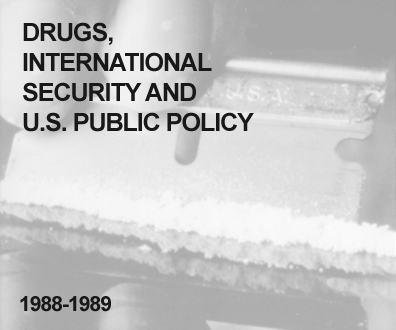- About this Program
- 2012 Conflict in the 21st Century
- 2011 Our Nuclear Age: Peril and Promise
- 2010 South Asia: Conflict, Culture Complexity, and Change
- 2009 Cities: Forging an Urban Future
- 2008 Global Poverty and Inequality
- 2007 Global Crises: Governance and Intervention
- 2006 The Politics of Fear
- 2005 Oil and Water
- 2004 Dilemmas of Empire and Nation Building
- 2003 Sovereignty and Intervention
- 2002 Global Inequities
- 2001 Race and Ethniciity: A Global Inquiry
- 2000 Global Games: Sports, Politics, and Society
- Symposium
- 1999 Global Crime, Corruption, and Accountability
- 1998 Exodus and Exile: Refugees, Migration, and Global Security
- 1997 The Future of Democracy
- 1996 Religion, Politics, and Society
- 1995 20/20 Visions of the Future
- 1994 Ethnicity, Religion and Nationalism
- 1993 Transformations in the Global Economy
- 1992 - International Security: The Environmental Dimension
- 1991 Confronting Political and Social Evil
- 1990 The Militarization of the Third World
- 1989 Drugs, International Security and U.S. Public Policy
- International Symposium
- 1988 Foreign Policy Imperatives for the Next Presidency
- 1988 Covert Action and Democracy
- 1987 The West Bank and Gaza Strip
- 1986 International Terrorism
- News
- Press Clips
- Calendar
- Resources
EPIIC Archives
1989 Drugs, International Security and U.S. Public Policy

|
|
Recent polls indicate that Americans consider drug control to be the number one domestic issue and that nearly half of all Americans regard drug trafficking as America's number one international problem. In 1989, many of the source countries for illicit drugs, the coca and opium producing states of Mexico, Colombia, Peru, Afghanistan, Iran, Pakistan and Burma were in turmoil. How does their instability affect the world drug market and the increasing addiction problem? What is the role of a democratic government in the control of drugs?
Despite apparent national political resolve and election-year rhetoric on the drug problem, there is doubt as to whether the U.S. government has really waged, or can realistically wage, a determined war on drugs. Many have called for a total reevaluation of our international drug policy, with a view towards formulating a more comprehensive approach.
Our forum will probe the past, current and future policies and decision-making processes that are intended to stem the flow of illicit narcotics into the United States. We believe it is important to analyze the new administration's approach in light of a growing consensus that, to date, efforts to greatly reduce the flow of illicit drugs from abroad have been unsuccessful. Mindful of this, we have planned our project to coincide with the Bush administration's first major public commitment to its war on drugs.
For decades, massive funding has been allocated to the supply-side of the drug supply-demand question. We intend to consider the ramifications and utility of such a strategy in the ongoing drug war. We will examine this strategy in the context of what the State Department terms the "intermestic" (international/domestic) supply and demand continuum: the impact of increased drug production and trafficking on Third World societies; the dynamics of illicit markets, organized crime and law enforcement efforts; the inherent tensions and contradictions that regularly appear between the U.S. anti-drug policy and other U.S. foreign policy goals and concerns; and policy alternatives, including the controversy over the legalization of illicit drugs.

